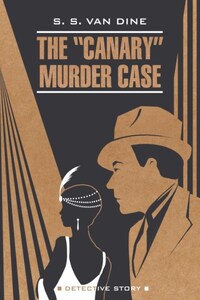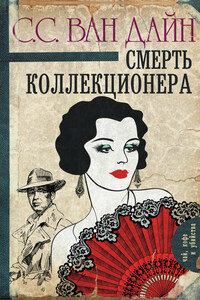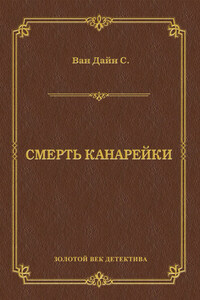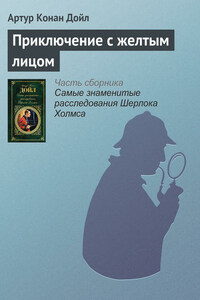© КАРО, 2023
Все права защищены
For many years I was the personal attorney and constant companion of Mr. Philo Vance; and this period covered the four years during which Mr. John F.-X. Markham, Vance’s closest friend, was District Attorney of New York. As a result it was my privilege to be a spectator of what I believe was the most amazing series of criminal cases that ever passed before the eyes of a young lawyer. Indeed, the grim dramas I witnessed during that period constitute one of the most astonishing secret documents in American police history.
Of these dramas Vance was the central character. By an analytical and interpretative process which, as far as I know, has never before been applied to criminal activities, he succeeded in solving many of the important crimes on which both the police and the District Attorney’s office had hopelessly fallen down.
Due to my peculiar relations with Vance it happened that not only did I participate in all the cases with which he was connected, but I was also present at most of the informal discussions concerning them which took place between him and the District Attorney; and, being of methodical temperament, I kept a complete record of them. It is fortunate that I performed this gratuitous labor of accumulation and transcription, for now that circumstances have rendered possible my making the cases public, I am able to present them in full detail and with all their various sidelights and succeeding steps.
In another volume—“The Benson Murder Case”—I have related how Vance happened to become involved in criminal investigation, and have also set forth the unique analytic methods of crime detection by which he solved the problem of Alvin Benson’s mysterious murder.
The present chronicle has to do with Vance’s solution of the brutal murder of Margaret Odell—a cause célèbre[1] which came to be known as the “Canary” murder. The strangeness, the daring, the seeming impenetrability of the crime marked it as one of the most singular and astonishing cases in New York’s police annals; and had it not been for Philo Vance’s participation in its solution, I firmly believe it would have remained one of the great unsolved mysteries of this country.
Philo Vance
John F.-X. Makkham – District Attorney of New York County.
Margaret Odell (The “Canary”) – Famous Broadway beauty and ex-Follies girl, who was mysteriously murdered in her apartment.
Amy Gibson – Margaret Odell’s maid.
Charles Cleaver – A man-about-town.
Kenneth Spotswoode – A manufacturer.
Louis Mannix – An importer.
Dr. Ambroise Lindquist – A fashionable neurologist.
Tony Skeel – A professional burglar.
William Elmer Jessup – Telephone operator.
Harry Spively – Telephone operator.
Alys La Fosse – A musical-comedy actress.
Wiley Allen – A gambler.
Potts – A street-cleaner.
Amos Feathergill – Assistant District Attorney.
William M. Moran – Commanding Officer of the Detective Bureau.
Ernest Heath – Sergeant of the Homicide Bureau.
Snitkin – Detective of the Homicide Bureau.
Guilfoyle – Detective of the Homicide Bureau.
Burke – Detective of the Homicide Bureau.
Tracy – Detective assigned to District Attorney’s office.
Deputy-Inspector Conrad Brenner – Burglar-tools expert.
Captain Dubois – Finger-print expert.
Detective Bellamy – Finger-print expert.
Peter Quackenbush – Official photographer.
Dr. Doremus – Medical Examiner.
Swacker – Secretary to the District Attorney.
Currie – Vance’s valet.
In the offices of the Homicide Bureau of the Detective Division of the New York Police Department, on the third floor of the Police Headquarters building in Center Street, there is a large steel filing cabinet; and within it, among thousands of others of its kind, there reposes a small green index-card on which is typed: “ODELL, MARGARET. 184 West 71st Street. Sept. 10. Murder: Strangled about 11 p.m. Apartment ransacked. Jewelry stolen. Body found by Amy Gibson, maid.”
Here, in a few commonplace words, is the bleak, unadorned statement of one of the most astonishing crimes in the police annals of this country—a crime so contradictory, so baffling, so ingenious, so unique, that for many days the best minds of the Police Department and the District Attorney’s office were completely at a loss as to even a method of approach. Each line of investigation only tended to prove that Margaret Odell could not possibly have been murdered. And yet, huddled on the great silken davenport in her living-room lay the girl’s strangled body, giving the lie to so grotesque a conclusion.
The true story of this crime, as it eventually came to light after a disheartening period of utter darkness and confusion, revealed many strange and bizarre ramifications, many dark recesses of man’s unexplored nature, and the uncanny subtlety of a human mind sharpened by desperate and tragic despair. And it also revealed a hidden page of passional melodrama which, in its essence and organisms, was no less romantic and fascinating than that vivid, theatrical section of the Comédie Humaine[2] which deals with the fabulous love of Baron Nucingen for Esther van Gobseck, and with the unhappy Torpille’s tragic death.
Margaret Odell was a product of the bohemian demi-monde[3] of Broadway—a scintillant figure who seemed somehow to typify the gaudy and spurious romance of transient gaiety. For nearly two years before her death she had been the most conspicuous and, in a sense, popular figure of the city’s night life. In our grandparents’ day she might have had conferred upon her that somewhat questionable designation, “the toast of the town”; but to-day there are too many aspirants for this classification, too many cliques and violent schisms in the Lepidoptera of our café life, to permit of any one competitor being thus singled out. But, for all the darlings of both professional and lay press-agents, Margaret Odell was a character of unquestioned fame in her little world.
Her notoriety was due in part to certain legendary tales of her affairs with one or two obscure potentates in the backwashes of Europe. She had spent two years abroad after her first success in “The Bretonne Maid”—a popular musical comedy in which she had been mysteriously raised from obscurity to the rank of “star”—and, one may cynically imagine, her press-agent took full advantage of her absence to circulate vermilion tales of her conquests.
Her appearance went far toward sustaining her somewhat equivocal fame. There was no question that she was beautiful in a hard, slightly flamboyant way. I remember seeing her dancing one night at the Antlers Club—a famous rendezvous for post-midnight pleasure-seekers, run by the notorious Red Raegan.












